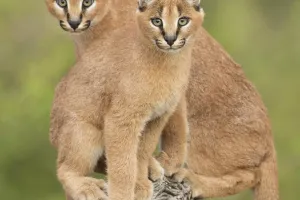Zebras evolved from primitive horses four million years ago, and the earliest zebras may have been Grevy's zebras. Fossils of prehistoric equids are now at the Ke Culture Stone Bed National Museum in Kewen, Idaho, USA.
Zebra's prehistoric horse is "Kwen horse" (American zebra or Kwen zebra), scientific name "Equus simplicidens", its body shape is roughly the same as that of zebras, its bones are short and narrow like a donkey, and its body shape is more like a Grevy zebra.
There are currently three species of zebras and their subspecies. Zebra numbers vary widely, and the taxonomic status of several subspecies is well known.
The most common species today is Equus quagga, also known as the common zebra, which lives mostly in South Africa and East Africa. Equus grevyi is currently the largest zebra. They are long and small, a bit like donkeys. Its zebras live in the semi-arid grasslands of Ethiopia and northern Kenya. Grevy's zebra is also the smallest zebra and is endangered.
Throughout history, humans have attempted to ride a variety of animals, including turtles, ostriches, camels, elephants, yaks, bulls, and goats. People especially like creatures that are adjacent to horses, such as mules, donkeys...
But zebras seem to be an exception. Why is no one riding a zebra? Is it because it's not worth it? Humans are not without effort. In 19th-century South Africa, someone once rode a zebra carriage; but mass domestication of zebras was nearly impossible.
The zebra was not domesticated, first of all because of its personality.
Zebras are from the African continent, and they are used to dealing with danger from the savannah.Zebras are grumpy and difficult to ride for a few minutes, not a docile foal at all. Zebras are accustomed to dealing with all kinds of dangers on the grasslands, and they are also very resilient.
Moreover, zebras have a keen evasion response to the risk of being arrested all year round. It's hard to get close to a zebra, let alone domesticate it as a human mount. In addition, the physiological characteristics of zebras also make them unsuitable for domestication.
Zebras are also unable to do many of the heavy-duty, transportation jobs that horses do. Zebras are smaller than horses and have different spine shapes, making it almost impossible to ride a zebra for a long time. You're uncomfortable sitting, and the zebra's bones and back can't handle it.
Strictly speaking, zebra crossings have nothing to do with zebras, but because the horizontal lines are more similar to the white stripes on zebras, they all have this name. The name of the rock jumping originated in ancient Rome, mainly to distinguish the sidewalk and the carriage, but with the popularity of the car, the rock jumping became more and more inconvenient. The British invented the white parallel line, which is the origin of the zebra crossing.
With the popularity of cars, the drawbacks of rock jumping gradually emerged, so people had to find a way to solve this problem. Until the 1950s, the British designed a horizontal grid-shaped white parallel line on the street , this is the first sidewalk.
According to regulations, people can only walk along the sidewalk when crossing the road, and vehicles need to slow down when they see the sidewalk, which can effectively maintain traffic order, and these horizontal lines are like the white stripes on a zebra. So it is also called "zebra crossing".


